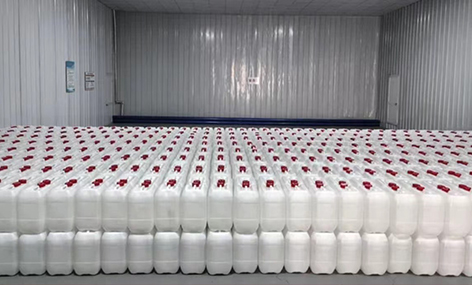
Nov . 11, 2024 07:41 Back to list
is glacial acetic acid the same as acetic acid
Is Glacial Acetic Acid the Same as Acetic Acid?
Acetic acid is an organic compound with the formula CH3COOH. It is known for its distinct sour taste and pungent smell, which is commonly associated with vinegar, where it typically constitutes about 4-8% of the solution. However, there is another form of acetic acid that is often mentioned in chemical contexts—glacial acetic acid. So, is glacial acetic acid the same as regular acetic acid? The answer to this question delves into the distinct characteristics and uses of both forms.
Glacial acetic acid refers to the pure, undiluted state of acetic acid. Its name comes from its ability to form ice-like crystals at low temperatures, resembling glacial formations. Being a colorless liquid, glacial acetic acid has a higher concentration than vinegar, generally exceeding 99% purity. In contrast, when we refer to acetic acid in everyday terms, we're usually talking about it in a diluted form, which is commonly used in cooking, food preservation, and various household tasks.
One key difference lies in their physical properties. Glacial acetic acid has a high boiling point of 118°C (244°F) and a freezing point of 16.6°C (61.88°F), allowing it to exist in a liquid state at room temperature but solidify in cooler environments. Regular acetic acid, particularly in its dilute form found in vinegar, has significantly lower concentrations and therefore does not possess the same solidifying qualities.
is glacial acetic acid the same as acetic acid

The chemical structure of both glacial and dilute acetic acid remains the same; they both contain the same molecular structure (CH3COOH). However, the distinction primarily lies in their concentration and some of their resultant chemical behaviors. Glacial acetic acid is a stronger acid due to its higher concentration, which significantly impacts its reactivity. This makes it highly corrosive and capable of participating in a range of chemical reactions that would not be practical with its dilute counterpart. For instance, glacial acetic acid can be a solvent in organic chemistry, making it essential in the production of various chemical compounds, including plastics, dyes, and pharmaceuticals.
Due to its highly reactive nature, glacial acetic acid must be handled with extreme caution. It can cause severe burns on contact with skin and can damage respiratory systems if inhaled. Such risks are often mitigated in industrial and laboratory settings through the use of personal protective equipment (PPE) and proper handling protocols. On the other hand, diluted acetic acid (vinegar) is safe for culinary uses and can be consumed without any harmful effects.
The applications for these two forms of acetic acid also differ notably. Glacial acetic acid serves predominantly in industrial contexts, such as in the synthesis of various chemicals and as a solvent in chemical reactions. In contrast, diluted acetic acid is widely utilized in cooking, food processing, and household cleaning products due to its mild acidity and safety for human use.
In conclusion, while glacial acetic acid and acetic acid share the same chemical identity, they differ significantly in concentration, properties, safety considerations, and applications. Understanding these distinctions is crucial for anyone working with or utilizing acetic acid in various fields, from culinary arts to chemical research. The two forms of acetic acid serve unique purposes, making them invaluable in both everyday life and industrial practices.
-
SmartAgri Solutions - Precision Farming&Soil Monitoring
NewsJul.13,2025
-
Industrial Solutions-Example Inc.|Smart Manufacturing&Energy Efficiency
NewsJul.13,2025
-
Food Grade Glacial Acetic Acid-Pure Quality|High-Purity Acetic Acid,Food-Grade Chemical
NewsJul.13,2025
-
Industrial Efficiency Solutions-NextGen Technologies|Advanced Automation&Data-Driven Analytics
NewsJul.12,2025
-
Smart Manufacturing Solutions-Example.com|Enhance Efficiency&Reduce Costs
NewsJul.12,2025
-
Food grade glacial acetic acid
NewsMar.07,2025
